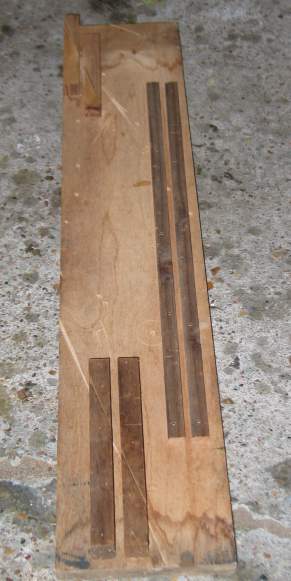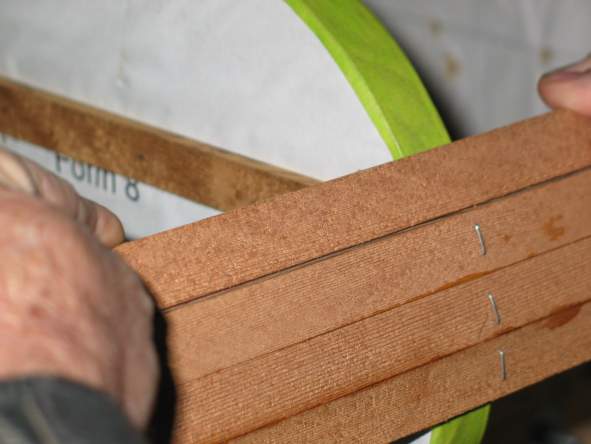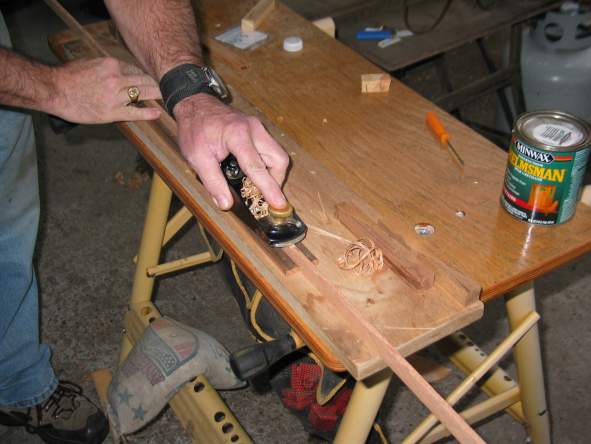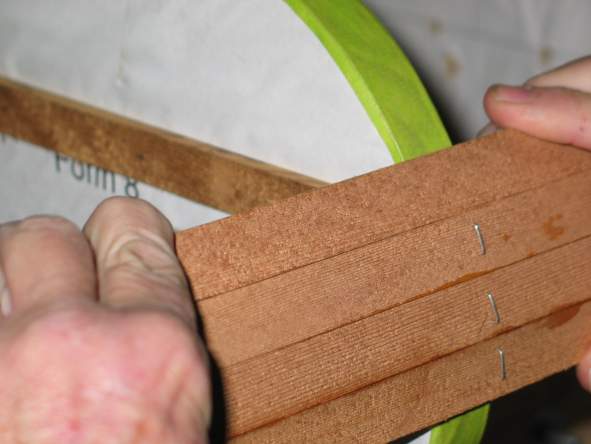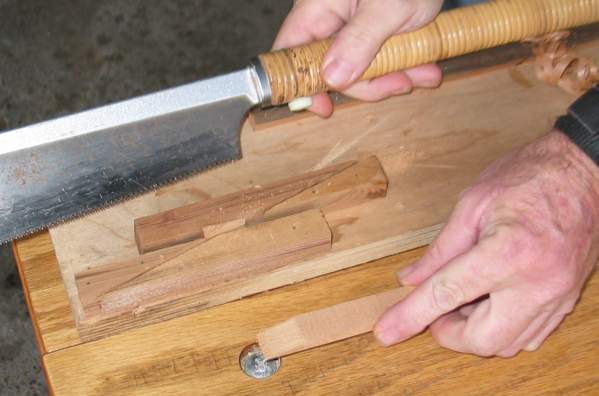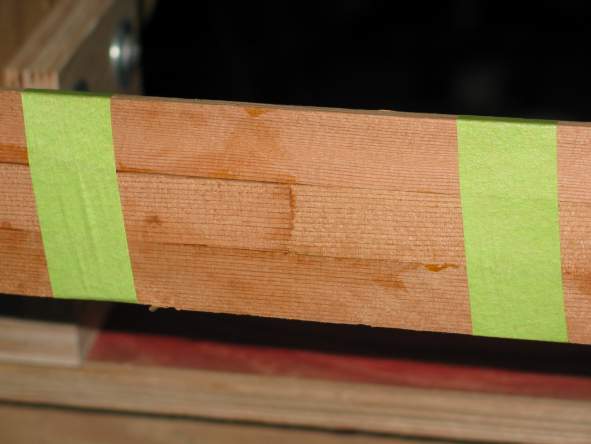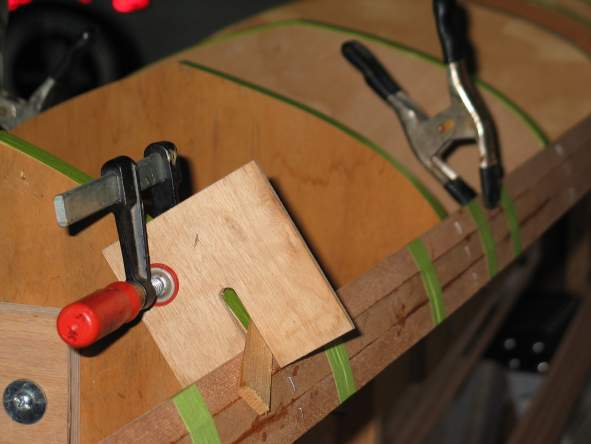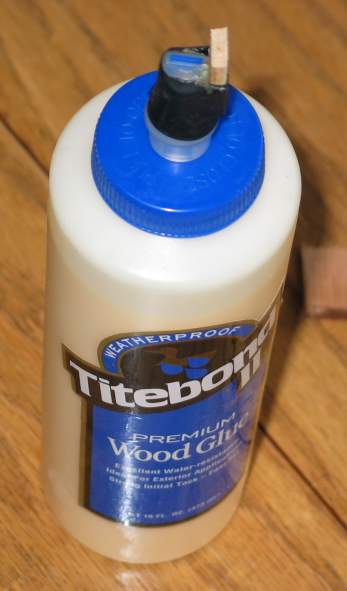| So we lay the strip in the beveling jig so it is held
edge-up, then use a block plane to whisk a bevel on it.
Unless it's a pretty radical curve you're fitting to, the bevel is
typically going to be so slight as to be almost indiscernible. The natural
tendency is over-bevel, and it's not much better than no bevel since the
edge gap is merely moved to the inside of the curve, where you don't see
it . . . until later. So it's best to err on the side of not enough bevel,
then you can always take a bit more off to get a proper fit. Remember the
old saw: It's always easier to take some more off than put some back on.
Work in two-foot segments, using forms to measure. I'll hold the strip
in place, see about how much bevel I need between a couple forms, and then
using where my fingers are holding the strip as a marker, lay the strip in
the jig with that part centered and hit it with the plane. Rinse and
repeat as necessary.
This works like everything else in boat building: It's slow and tedious
at first, but with practice comes speed and efficiency. Take all the time
you need to get a good fit, and don't worry if it takes a freakin' hour;
you'll soon require only a few minutes for each course of strips, and it's
even fun.
Note the 25-lb bag of bird shot draped over the brace on the work
stand. It makes the lightweight stand feel solid as a full size workbench.
Get a couple bags at a sporting goods store that deals in gun stuff, they're
handy as heck. And if you look closely, just below the bag-o-shot lies a
leveling shim (shallow wedge). It takes any wobble out of the stand.
Suffering wiggle and wobble in your work benches and stands is Epic BS.
The fastest, surest, and easiest way to make giant strides towards expert
woodworking is dealing with it. |
